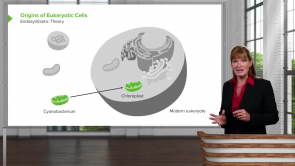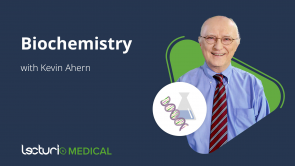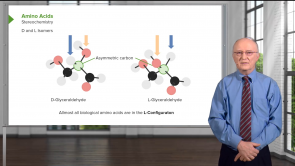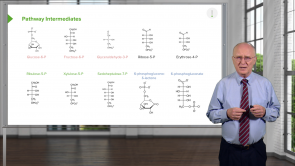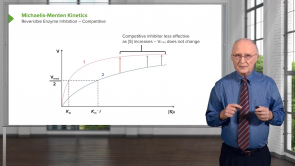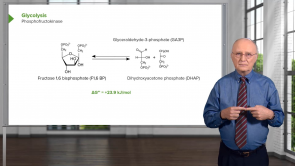Introduction to the Citric Acid Cycle

About the Lecture
The lecture Introduction to the Citric Acid Cycle by Kevin Ahern, PhD is from the course Carbohydrate Metabolism. It contains the following chapters:
- Introduction to the Citric Acid Cicle
- Ketone Body Metabolism
Included Quiz Questions
Which of the following molecules is central to most of the biological reactions in the cell during metabolism?
- Acetyl CoA
- Ethanol
- Glucose
- Lipoamide
- Acetaldehyde
Which of the following amino acids is not synthesized from α-ketoglutarate of the citric acid cycle?
- Tyrosine
- Glutamine
- Glutamate
- Proline
- Arginine
Which of the following statements is not true regarding the citric acid cycle?
- The citric acid cycle enables the yeast or a bacterial cell to get metabolic energy from acetyl Co-A in the absence of oxygen.
- The catabolic breakdown of amino acids produces the intermediates of the TCA cycle.
- During anabolism of amino acids, the intermediates of the TCA cycle are used to synthesize the amino acids like glutamine, glutamate, proline, and arginine.
- The oxaloacetate, a TCA cycle intermediate, acts as a precursor for the synthesis of aspartate, asparagine, methionine, and threonine.
- In the absence of oxygen, the acetyl Co-A can’t enter the TCA cycle, so the yeast produces energy by converting pyruvate to ethanol.
Which of the following statement is not true regarding the pyruvate dehydrogenase enzyme?
- The pyruvate dehydrogenase enzyme converts the acetaldehyde to ethanol in the yeast cell in the absence of oxygen.
- The pyruvate dehydrogenase enzyme is a mitochondrial enzyme.
- The pyruvate dehydrogenase enzyme is a very large multimeric complex composed of three subunits named E1, E2, and E3
- The E2 subunit of pyruvate dehydrogenase enzyme converts the TPP-acetaldehyde to acetyl-lipoamide, whereas the E3 subunit coverts the acetyl-lipoamide to acetyl-CoA.
- The enzyme pyruvate dehydrogenase converts the pyruvate to acetyl Co-A via decarboxylation in the presence of oxygen.
These courses may be of interest to you
Customer reviews
5,0 of 5 stars
| 5 Stars |
|
5 |
| 4 Stars |
|
0 |
| 3 Stars |
|
0 |
| 2 Stars |
|
0 |
| 1 Star |
|
0 |

